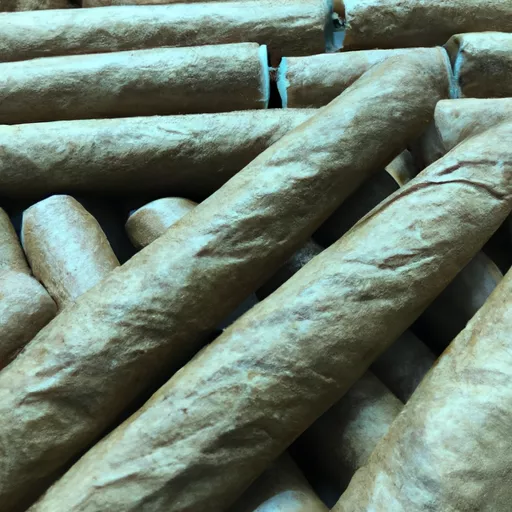
As a cigar enthusiast, I have always been intrigued by the world of little cigars. These small and flavorful cigars are often overlooked by traditional cigar smokers, but they pack a punch in terms of taste and experience. In this article, I will delve into the history, production process, and flavors of little cigars, and why they are worth a try for any cigar aficionado.
History of Little Cigars
The origins of little cigars can be traced back to the early 1800s, when smoking became popular in Europe and the United States. Cigars were seen as a status symbol and were smoked by the wealthy elite. However, the high cost and size of traditional cigars made them unaffordable for many people.
This led to the invention of little cigars, also known as cigarillos, which were smaller in size and cheaper to produce. They quickly gained popularity among the working class and were seen as a more affordable alternative to traditional cigars.
In the late 19th and early 20th century, little cigars were mass produced in factories and sold in packs of 10 or 20. They were commonly flavored with fruit or other natural essences to appeal to a wider audience. However, the quality of these little cigars was questionable, as they were often made with low-grade tobacco and had a harsher taste than traditional cigars.
It wasn’t until the late 20th century that little cigars started to gain recognition and respect among cigar smokers. With the rise of boutique cigar brands, little cigars were given a new lease on life as they began to be produced with high-quality tobacco and in a variety of flavors and sizes.
Production Process
Little cigars are made using the same process as traditional cigars, but with some minor differences. The first step is to select the tobacco that will be used for the filler, binder, and wrapper. While traditional cigars use whole leaves, little cigars use smaller pieces of tobacco, which are referred to as short-filler.
The short-filler is then rolled into a binder, which is a tobacco leaf that holds the filler together. The binder is then wrapped in a tobacco leaf, known as the wrapper, which gives the cigar its overall appearance and adds to the flavor profile.
Unlike traditional cigars, little cigars are not aged for a long period of time. Instead, they are sent through a quick curing process to ensure they are ready for smoking in a shorter amount of time. This gives them a fresher and less complex taste compared to traditional cigars.
Flavors of Little Cigars
Little cigars come in a variety of flavors that cater to different taste preferences. From bold and spicy to sweet and fruity, there is a little cigar for every palate. Some of the most popular flavors include vanilla, cherry, chocolate, and coffee.
One notable flavor trend in the little cigar industry is the use of infused cigars. These cigars are infused with different flavors such as rum, whiskey, or even wine during the production process. This adds a unique twist to the traditional flavors and creates a more complex smoking experience.
Why Choose Little Cigars?
You may be wondering, with the vast array of traditional cigars available, why choose a little cigar? Well, there are a few reasons why little cigars deserve a spot in any cigar lover’s collection.
Firstly, little cigars offer a quick and convenient smoking experience. Due to their small size, they can be smoked in a shorter amount of time compared to traditional cigars. This makes them perfect for a lunch break or a quick smoke on the go.
Furthermore, little cigars are more affordable than traditional cigars, making them accessible to a wider range of smokers. This also allows for experimentation with different flavors and brands without breaking the bank.
Lastly, little cigars offer a different smoking experience. While they may not have the depth and complexity of traditional cigars, they provide a bold and flavorful smoke that can be enjoyed by smokers of all levels.
Tips for Enjoying Little Cigars
To fully enjoy your little cigar experience, here are a few tips to keep in mind:
1. Store them properly: Proper storage is crucial for maintaining the quality and flavor of your little cigars. Invest in a humidor or airtight container to keep them fresh and prevent them from drying out.
2. Cut the right amount: Since little cigars are smaller in size, cutting too much off the cap can result in a looser draw and a hot burn. Use a sharp cutter and cut just enough to create an even opening.
3. Don’t inhale: Little cigars contain high amounts of nicotine, so inhaling can lead to a harsh and unpleasant experience. Savor the flavors through your mouth and slowly exhale.
4. Experiment with pairing: Just like traditional cigars, little cigars can be paired with different drinks such as coffee, tea, or even whiskey. Be adventurous and see what flavors complement each other.
In conclusion, little cigars may be small in size, but they offer a unique and enjoyable smoking experience. With a range of flavors, convenient size, and affordability, it’s no wonder why they have stood the test of time and have gained a place in the hearts of cigar lovers worldwide. So next time you’re looking for a quick smoke with a punch of flavor, don’t overlook little cigars. Trust me, your taste buds will thank you.